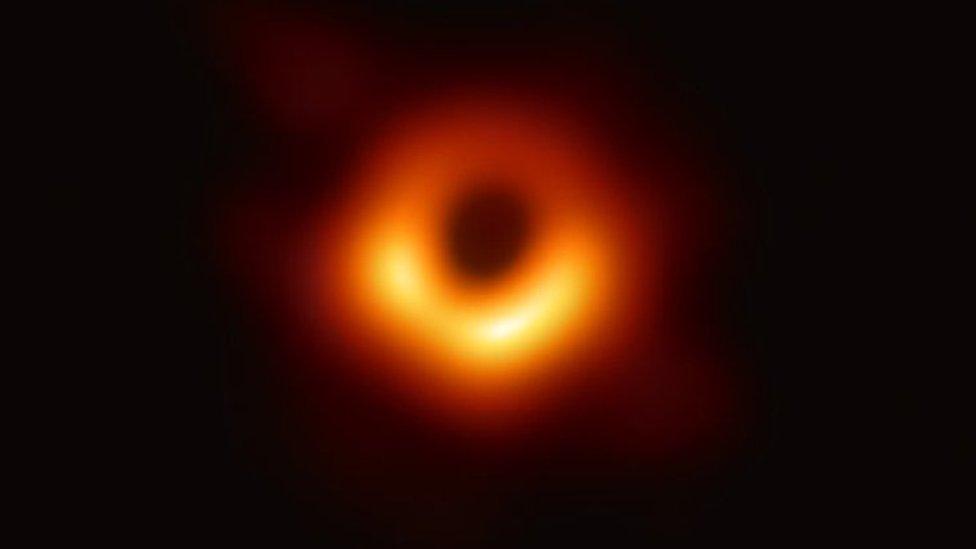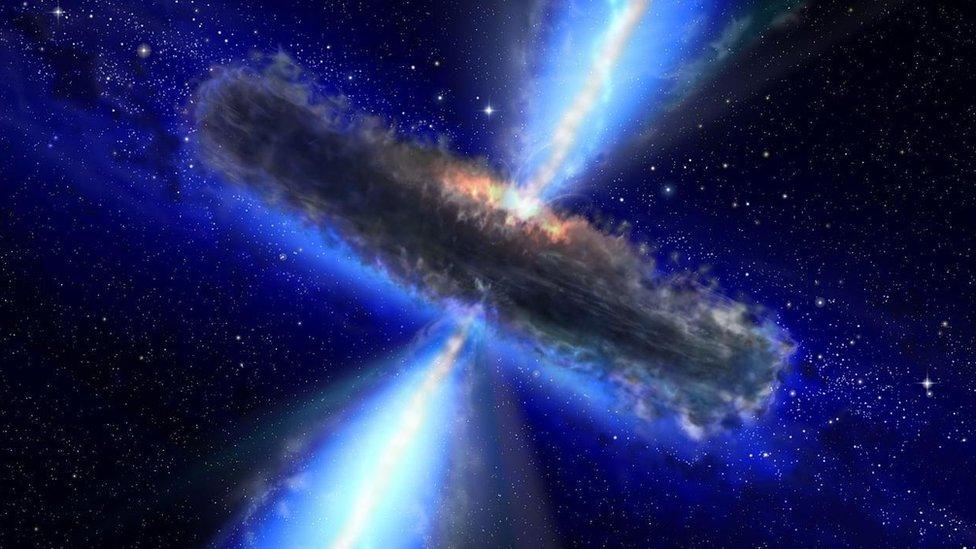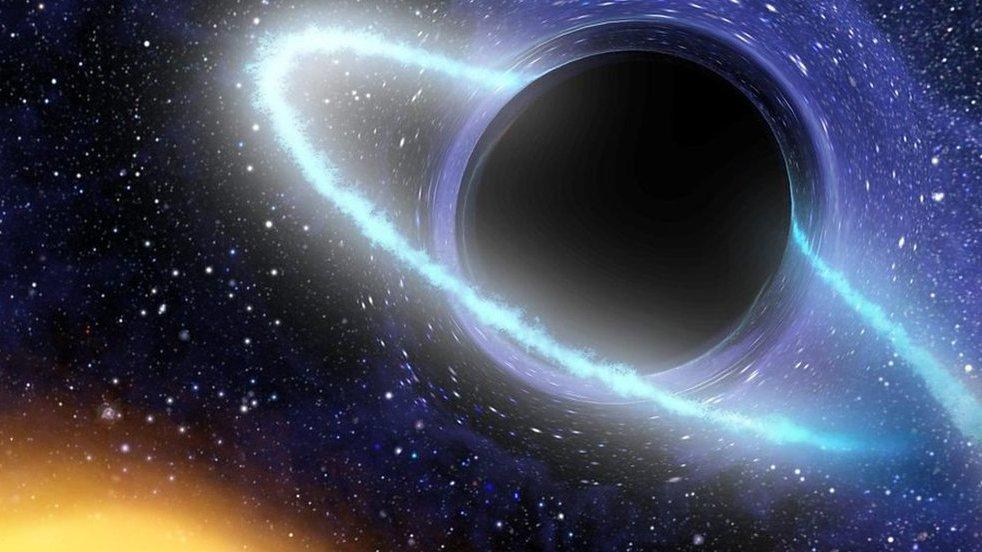Nasa catches black hole destroying a star
- Published
- comments
WATCH: The star being destroyed by the black hole [Animation: NASA's Goddard Space Flight Center]
Nasa's planet-hunting Transiting Exoplanet Survey Satellite (TESS) has watched a black hole pull apart a star from start to finish.
When a star moves too close to a black hole, intense tides break it apart into a stream of gas. The tail of the stream escapes the system, while the rest of it swings back around, surrounding the black hole with a disk of debris.
The star experiences 'spaghettification' - this doesn't mean being turned into a pasta dish, but the vertical stretching and horizontal compression of objects into long thin shapes, basically it being stretched in to what looks like spaghetti strands.
The phenomenon is called a tidal disruption event and this is the first time scientists have been able to observe it in so much detail.
Tidal disruptions are incredibly rare, occurring once every 10,000 to 100,000 years in a galaxy the size of our own Milky Way.
TESS monitors large sections of the sky for 27 days at a time so it can see periodic dips in a star's brightness that may show orbiting planets.
The planet hunter observed the star and the black hole every half-hour for months so were able to work out a complete picture of the star's destruction.
The black hole involved weights around 6 million times the Sun's mass.
"[This blast] will allow us to improve our understanding of the physics at work when a star is unlucky enough to meet a black hole," said Decker French, a Carnegie astronomer and a member of the study team.
- Published11 April 2019

- Published5 June 2017

- Published12 January 2018

